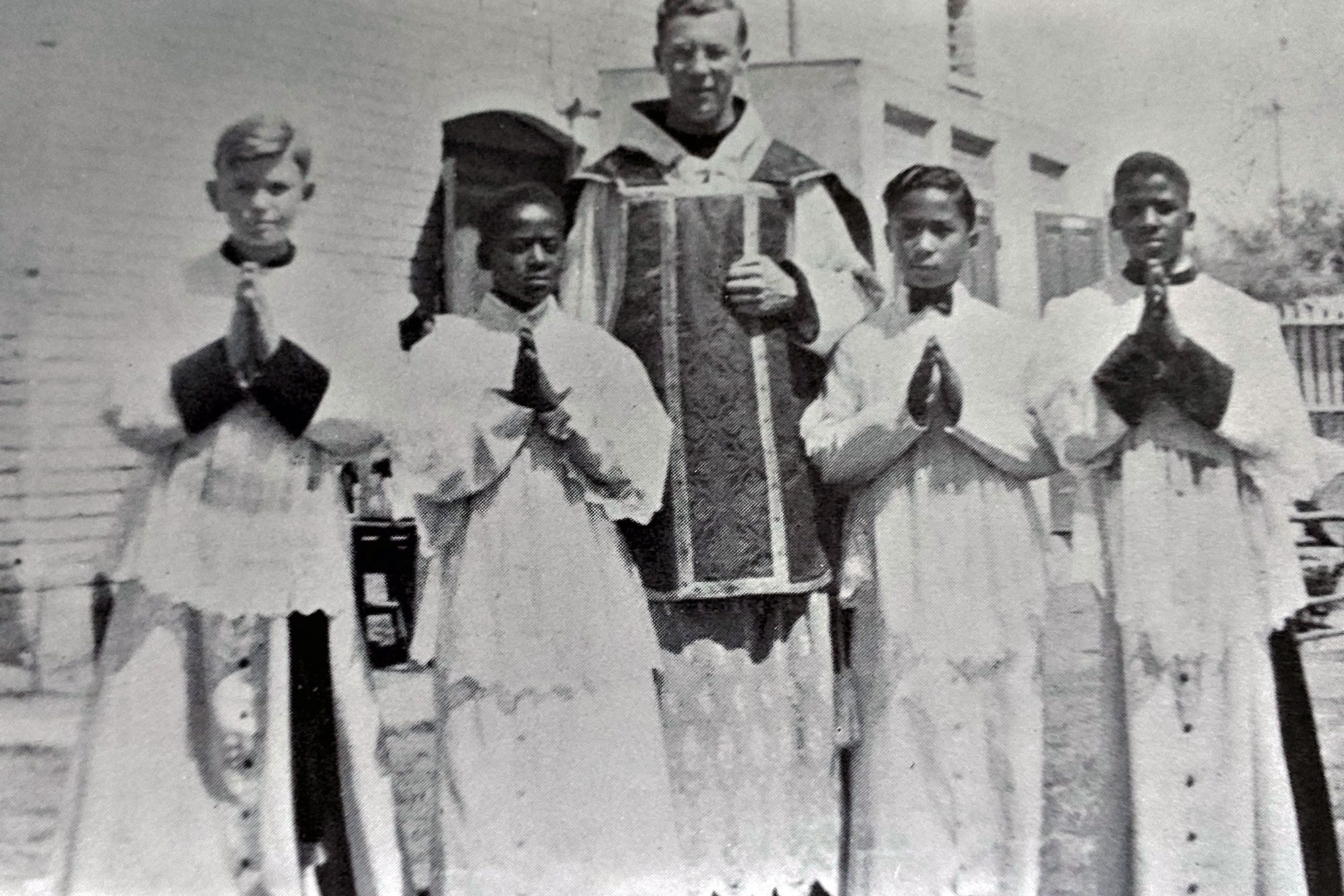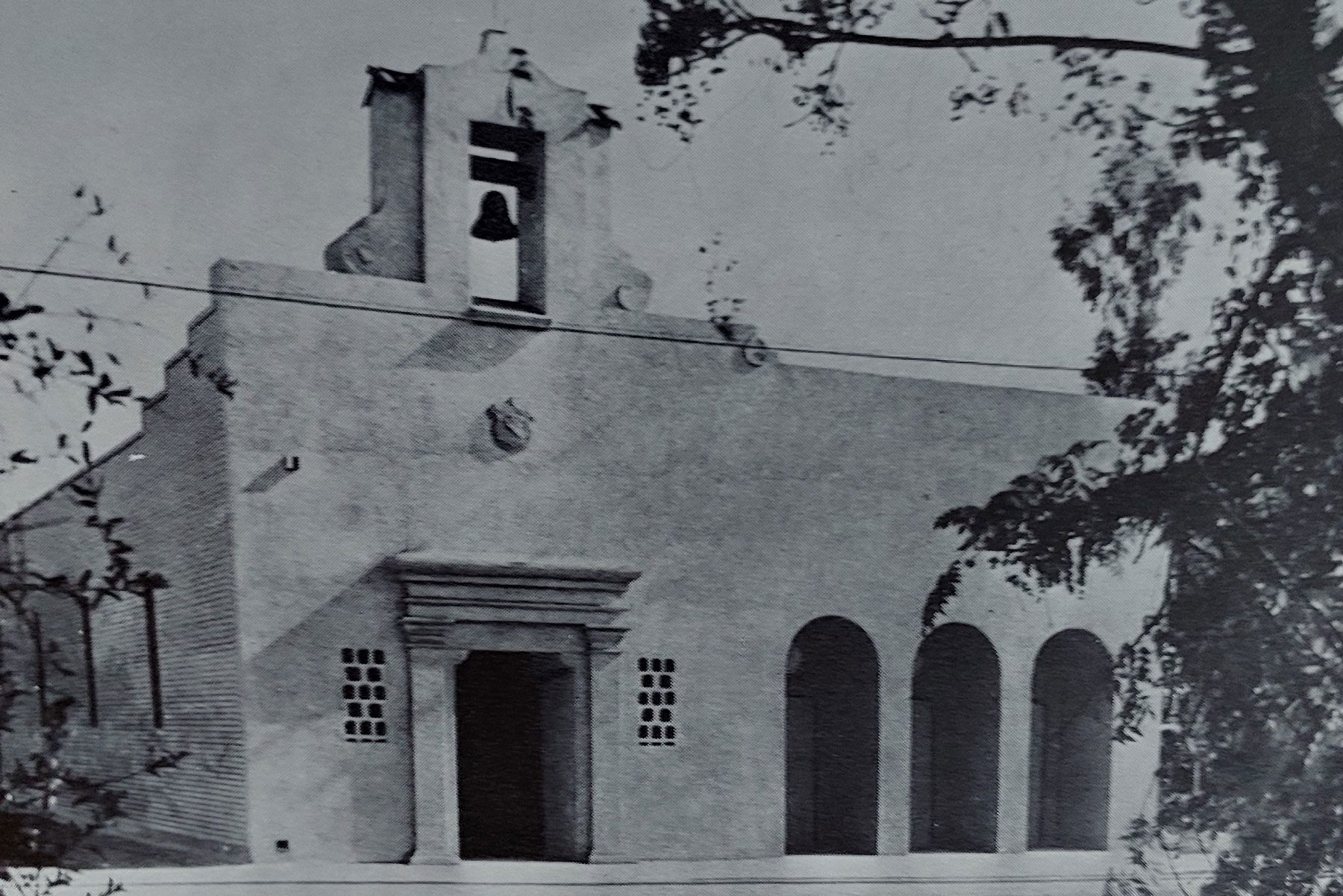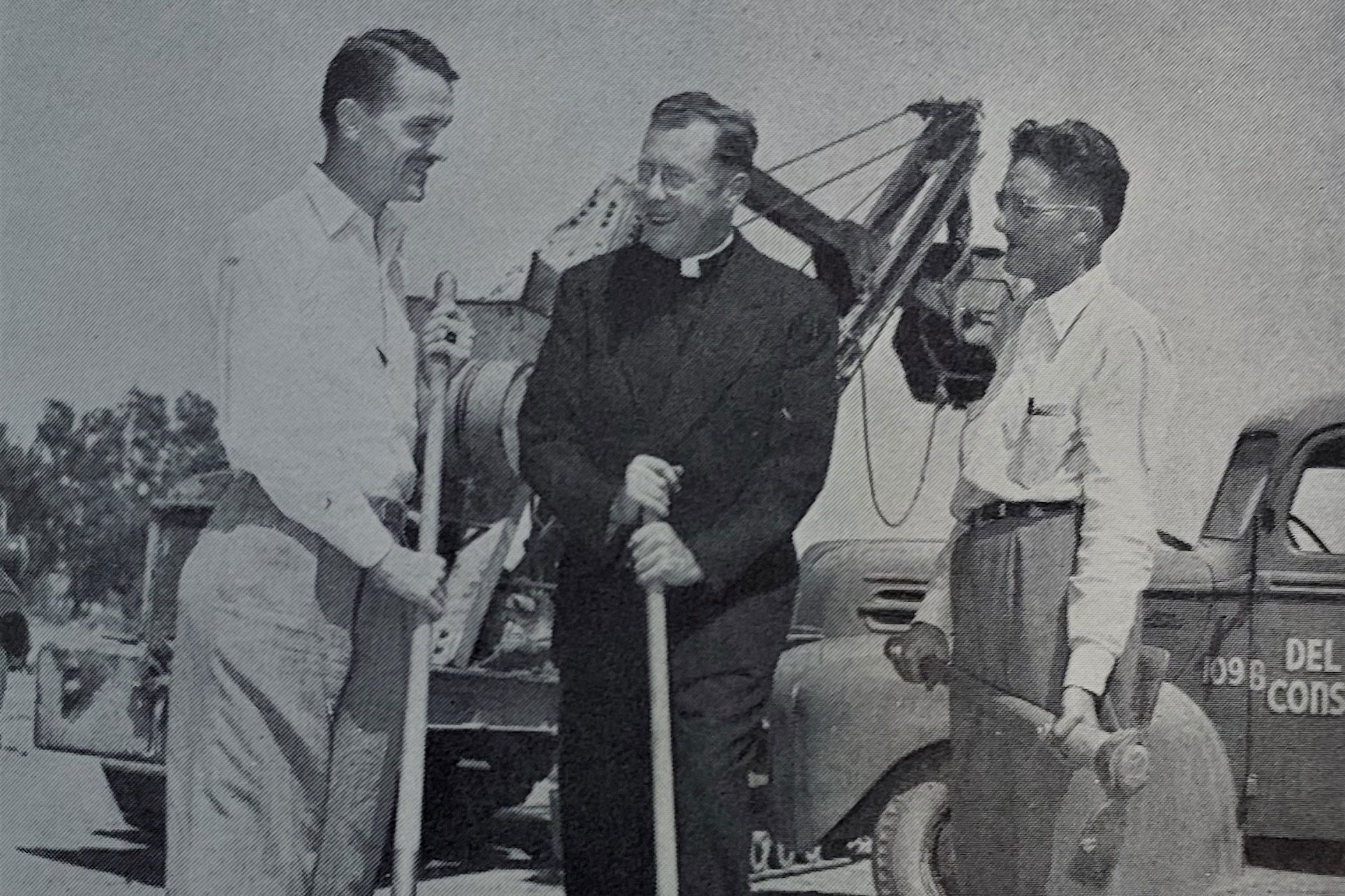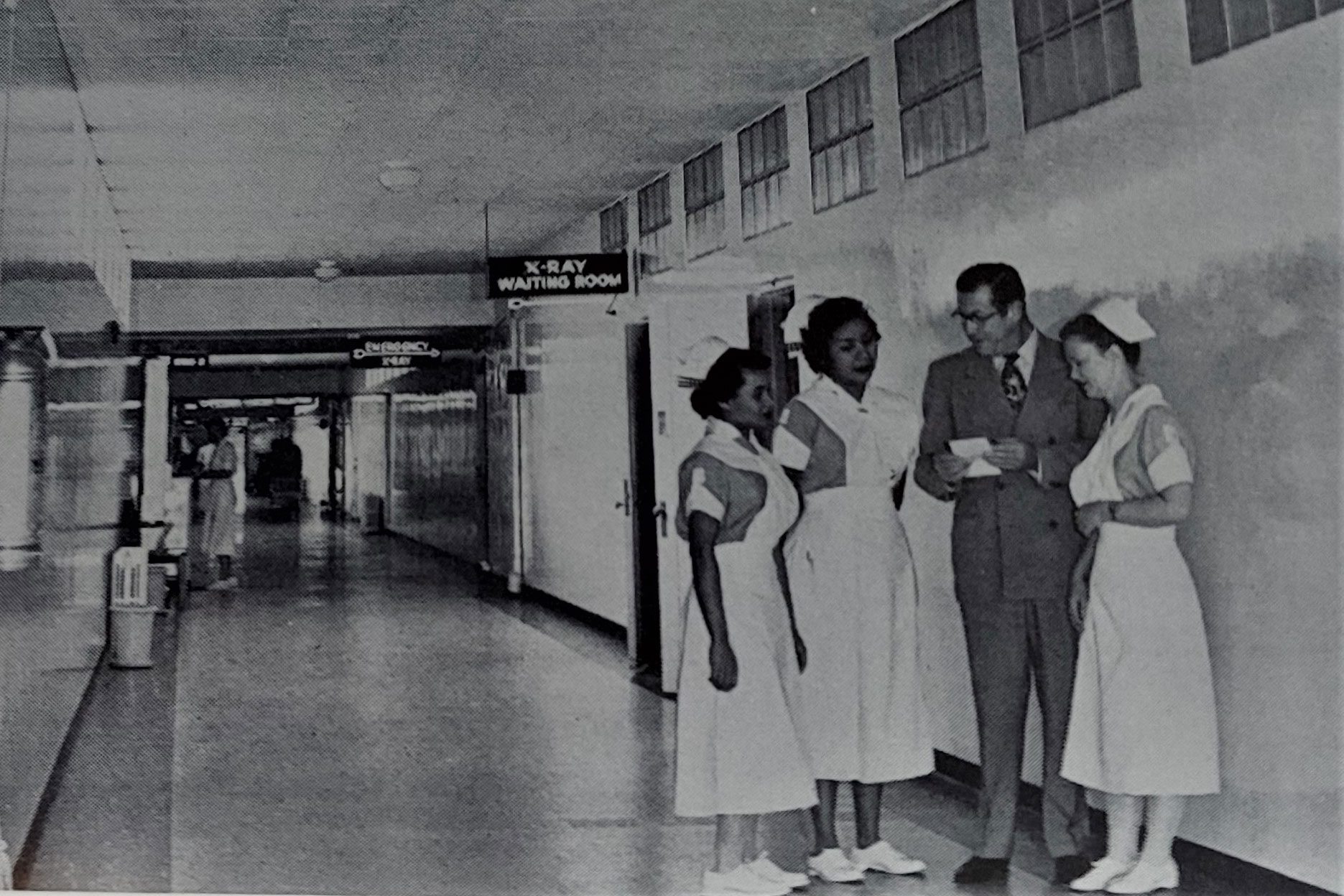
Father Emmett McLoughlin and altar boys during the 1940s, pictured outside St. Monica’s Community Center — a desegregated Catholic Church, social hall and healthcare clinic. (Photo: “People’s Padre,” McLoughlin’s autobiography)
One of Phoenix’s greatest advocates for equality is little remembered these days, unfortunately. The city’s Emmett McLoughlin Community Training and Education Center, located at 1150 S. Seventh Avenue, is about the only public nod to this man who did so much for the community. Just who was this person, who called himself the “People’s Padre”?
“He was a very cohesive and binding force in a community that was in great need,” said Katherine Bass-Ayers, from an interview in 2013. Her parents, Everett and Catherine Bass, often hosted McLoughlin for dinner in their Phoenix home. “He was so far ahead of his time,” she said.
McLoughlin was born in 1907 in a rough section of Sacramento, California. He was ordained as a Catholic priest in 1933 and assigned to a low socioeconomic neighborhood south of Downtown Phoenix.

Emmett McLoughlin renovated an abandoned grocery into a community center in 1936, and later turned the building next door into a free maternity clinic. The facility was called St. Monica’s Community Center, pictured here in the late 1930s. (Photo: “People’s Padre”)
The city “…turned out to be a wide, new, wonderful world filled, to a young priest, with sin and corruption and a multitude of souls needing salvation,” McLoughlin wrote in his 1954 autobiography, People’s Padre.
The priest began a one-person crusade to improve residents’ lives, including transforming a vacant storefront on Seventh Avenue into Saint Monica’s Community Center.
The facility provided social services and worship space for people of color who were not allowed to attend the city’s other Catholic churches. He sponsored Father Emmett’s Mission baseball team, a talented roster of youth who wore Kelly green uniforms to celebrate their padre’s Irish ancestry.

Father Emmett McLoughlin (center) pictured at the St. Monica’s Hospital groundbreaking in 1943. (Photo: “People’s Padre”)
In 1939, McLoughlin turned his attention to the area’s housing needs. “Father Emmett was primarily responsible for the Phoenix housing projects being established,” Bass-Ayers said. “Prior to that time, the conditions in that section of town were deplorable, and people were living without basic safety and sanitary conditions.”
A federal grant helped build 600 public housing units in the racially-segregated Matthew Henson, Marcos de Niza, and Frank Luke, Jr. projects, designated for African Americans, Mexican Americans and Anglos, respectively.
The energetic priest also spearheaded efforts to create the 232-bed Saint Monica’s Hospital in 1944. McLoughlin served as the hospital’s superintendent and began the first desegregated nursing program in the West.

McLoughlin and nurses pictured in the late 1940s. The nursing school at Saint Monica’s Hospital was the first desegregated nursing program in the West. (Photo: “People’s Padre, An Autobiography”)
“For the first time, Black people were employed in a wide range of jobs they had always been denied access to,” Bass-Ayers said. “The heads of laboratory, X-ray, and pharmacy departments were held by Blacks.”
Despite major inroads, the church hierarchy charged McLoughlin with neglecting religious life, and planned to transfer him to a distant monastery in 1948. After much deliberation, McLoughlin chose to continue his work in Phoenix and resigned from the Catholic Church, concluding, “I make this decision with the full and prayerful consciousness that God will be my judge.”
His choice proved highly controversial, but McLoughlin had support from his hospital staff and continued to lead the renamed Phoenix Memorial Hospital. McLoughlin would go on to author six books that were critical of the Catholic church and win numerous community service awards until his death at age 64 in 1970.
“I strongly feel that Father Emmett still has not been given the kind of widespread recognition, especially by this city, that he deserves,” Bass-Ayers said. “Phoenix owes him a debt of gratitude.”





